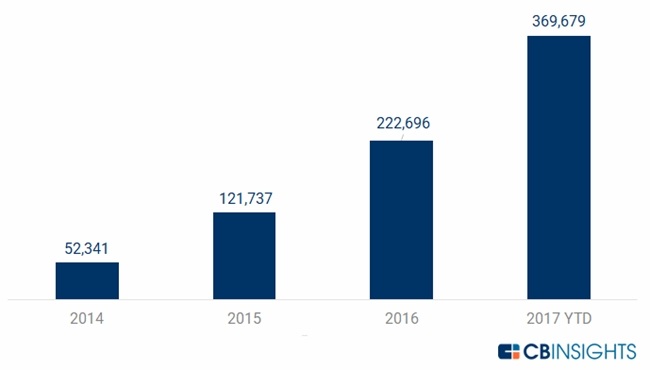Most B2B newsletters seem confused as to why they exist.
We studied 100 of them over three months, and the results weren't heartening.
Most were difficult to read, visually confusing, and didn't provide much utility to the reader. It seemed that the marketers behind them were more interested in promoting articles and earning blog impressions than in creating an experience worth subscribing to. But the top 10 percent were completely different.
The top 10% of newsletters were beautiful to look at and minimal in their design; they included funny, concise, and thought-provoking remarks; and they seemed determined to offer an elevated experience that a reader couldn't get just by visiting their blog.
So we asked the people behind a few of those top newsletters: "What's your secret?"
Be consistent
Tallie Gabriel, writer and social media editor, Contently
Contently is a content marketing software, and the team writes a blog for marketers called The Strategist, so writing well is their forte. But what sets them apart is their consistency: Contently's newsletter uses the same cerulean blue header and sans-serif font as its website, and it features the site's signature humorously skeptical tone.
The newsletter passes Ann Handley's famous test: Even if you stripped away all the design, you could still tell from the writing alone that it was Contently.
We asked the newsletter editor, Tallie, how do you do it?
Beyond using an internal style guide, she said, "when building a newsletter, it's important to keep your brand voice clear and recognizable. Don't overwhelm your audience with text. Ask yourself, 'How can I address my point as clearly and concisely as possible while keeping with my brand's tone?' If you can throw in some humor and exciting data to keep your audience engaged, even better. But above all, be consistent."

Contently's newsletter matches its website
Be brief
Tyler Hakes, strategy director and principal, Optimist
Optimist is a marketing agency that loves to bare all on its blog: successes, doubts, and failures. Its newsletter is also quite short—145 words, or half as long as other newsletters, on average—but it packs a lot of story into not a lot of text and always ends with a link to one article.
"It helps a lot that I'm also a practitioner myself," said Tyler, "I can empathize with our reader. In general, I think fewer pieces per email makes it easier for the reader. There's a paradox when it comes to choice: If you overwhelm people with too many options, they're more likely to just do nothing."
Optimist's newsletter is also notable for not going out on a set schedule. Tyler said that's an advantage. "You'll notice that our 'newsletter' isn't like many others. I only send out emails periodically, whenever we have new content," he says. Which is to say, he never sends a newsletter unless he has some something valuable to share. "I introduce a new article," said Tyler, "and that's it."
Be entertaining
Anand Sanwal, CEO and co-founder, CB Insights
The CB Insights newsletter became famous doing everything different. Early on, CEO and Co-Founder Anand wrote them in abbreviated plain-speak, took idiosyncratic positions that inspired heated debates, and ended every newsletter with "I love you." (Which also sparked debate.)
Today, the CB Insights newsletter has more than 500,000 subscribers. But when it launched eight years ago, it had only a few hundred. "It took us almost 2.5 years to get to 10,000," says Anand. But it did, because he was persistent and had a strategy.

CB Insights' audience nearly doubles each year
"Don't be boring, especially in B2B," said Anand. "The reality is that most B2B newsletters are self-promotional, jargon-infested drivel. And that is because people think that in B2B, you need to be boring, serious, and buttoned up. Most B2B newsletters forget that people reading their content want to be educated but also entertained."
The CB Insights newsletter uses subject lines with murder mystery-levels of intrigue ("clueless CEO sells company"), email introductions that beg to be read ("On April 17, 2017, my dad died"), and backs up its articles with more research than The Economist's intelligence unit.
Which is to say: They're funny. They're true. And they're immensely difficult to stop subscribing to.
Above all, be respectful
There is one constant in the great newsletters like those of Contently, Optimist, and CB Insights: They're deeply respectful of their readers' time. Instead of firing off links to the day's blog post sans-context like the average newsletter, they carefully edit their writing, polish their email design, and aim to entertain.
Whereas average newsletters tried to drive clicks, the top ones tried to create experiences, our study found. And there's plenty marketers can learn from that.
Want more newsletter stats and insights? Download the full study.




